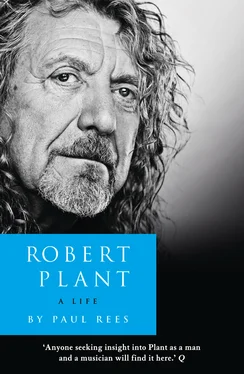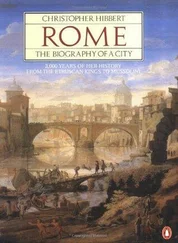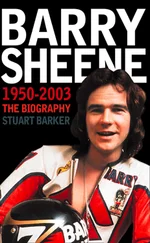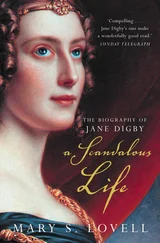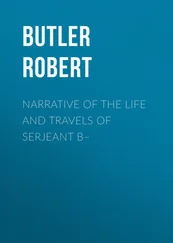When the Second World War came the region was inextricably tied to it. Neville Chamberlain, the British prime minister at the time of its outbreak who had misguidedly attempted to appease Adolf Hitler, was born into one of Birmingham’s great political dynasties. Although the war was eventually won, its after-effects lingered on into the following decade. The rationing of foodstuffs such as meat and dairy continued in Britain until 1954. At the time of Plant’s childhood, West Bromwich and the Black Country, like so many of the country’s towns and cities, still bore the scars from six years of conflict. As a centre for the manufacture of munitions the area had been a prime target for German bombs. Throughout Birmingham and the Black Country were the shells of buildings and houses blasted into ruin. It was an everyday occurrence to find the tail end of bombs or shards of shrapnel littering the streets.
‘The whole area was still pretty much a bomb site in the early 1950s,’ recalls Trevor Burton, who grew up in Aston to the north-east of Birmingham’s city centre, and who would later cross paths with Plant on the local music scene of the 1960s. ‘The bomb sites, these piles of rubble and blown-out houses, they were our playgrounds.’
The 1950s would bring great change to Britain. At the start of the decade few Britons owned a TV set; those who did had just one channel to watch – in black and white. The coronation of Queen Elizabeth II on 2 June 1953 led to an upsurge in TV ownership and by the end of the decade 75 per cent of British homes had a set. The ’50s also witnessed the opening of Britain’s first motorways – the M6 in 1958 and the M1 in 1959 – establishing faster, more direct road links between cities such as London, Birmingham, Liverpool and Manchester. Such progress brought the world closer to Britain, making it appear more accessible.
Yet at the same time Britain’s role on the global stage was diminishing. The Suez Crisis of 1956, during which Britain tried and failed to seize back control of the Suez Canal from Egypt, hastened the end of Empire. The United States and the Soviet Union were the new superpowers, Britain being relegated to the role of junior partner to the Americans in the decades-long Cold War that was to unfold between those two nations.
The national mood in Britain, however, was one of relief at the end of the war in Europe and of hope for better times. This began to be realised from the middle of the decade, by which time the nation’s economy was booming and wages for skilled labour were increasing. A rush by the British to be socially upwardly mobile left a void for unskilled workers that was filled by successive governments with immigrant labour from the Commonwealth. With these workers populating its steel mills and foundries – and now its car plants, too – Birmingham and the Black Country soon ranked among the country’s most multi-cultural areas. To the already healthy Irish population in Birmingham there would be added vibrant communities drawn from the Caribbean, India and Pakistan.
In 1957, so pronounced was the collective sense of affluence and aspiration that Harold Macmillan, the Conservative prime minister, predicted an unprecedented age of prosperity for the country. ‘Let us be frank about it,’ he said, ‘most of our people have never had it so good.’ The British people agreed and elected Macmillan to a second term of office in October 1959.
The Plant family embodied the rise of the middle classes in Macmillan’s Britain. As a skilled worker, Robert Plant Sr could soon afford to move his wife and son out from West Bromwich to the greener fringes of the Black Country. They came to leafy Hayley Green, a well-heeled suburban enclave located fifteen miles from the centre of Birmingham.
Their new home was at 64 Causey Farm Road, on a wide street of sturdy pre-war houses just off the main road between Birmingham and the satellite town of Kidderminster. It was a neighbourhood of traditional values and twitching net curtains, populated by white-collar workers. Unlike West Bromwich, it was surrounded by countryside. Farmland was abundant, the Wyre Forest close by and Hayley Green itself backed onto the Clent Hills.
Situated near the end of Causey Farm Road, number 64 was one of the more modest houses on the street. Built of red brick, it had a small drive and a garage, and from its neat back garden there was an uninterrupted view out to the rolling hills. For the young Plant there would have been many places to go off and explore: those hills, or the woods at the end of the road, or over the stiles and across the fields to the town of Stourbridge, with its bustling high street.
It was during this period that many of Plant’s lifelong passions were first fired. The Clent Hills and their surrounding towns and villages were the inspiration for the landscape of J. R. R. Tolkien’s Middle Earth, the writer of The Lord of the Rings trilogy and The Hobbit having grown up in the area in the 1890s. Plant devoured Tolkien’s books as a child, and time and again in later life would reference the author’s fantastical world in his lyrics.
In the summer the Plants, like so many other Black Country families of the time, would drive west for their holidays, crossing the border into Wales. They would head for Snowdonia National Park, 823 square miles of rugged uplands in the far north-west of the country. It was an area rich in Celtic folklore and history, and this, together with the wildness of the terrain, captivated the young Plant.
He was entranced by such Welsh myths as those that swirled around the mountain Cadair Idris, a brooding edifice at the southern edge of Snowdonia near the small market town of Machynlleth, which the Plants would often visit. It was said that the mountain was both the seat of King Arthur’s kingdom and that of the giant Idris, who used it as a place of rest from which he would sit and gaze up at the evening stars. According to legend anyone who sleeps the night on the slopes of Cadair Idris is destined to wake the next morning as either a poet or a madman.
At Machynlleth Plant learnt of the exploits of the man who would become his great folk hero, the Welsh king Owain Glyndŵr. It was in the town that Glyndŵr founded the first Welsh parliament in 1404, after leading an armed rebellion against the occupying English forces of King Henry IV. The uprising was crushed five years later, and Glyndŵr’s wife and two of his daughters were sent to their deaths in the Tower of London. Glyndŵr himself escaped capture, fighting on until his death in 1416.
But for Plant there would be nothing to match the impact that rock ’n’ roll was to have upon him as a child. Like every other kid who grew up in post-war Britain he would have been aware of an almost suffocating sense of primness and propriety. Children were taught to respect their elders and betters. In both the way they dressed and were expected to behave they were moulded to be very much like smaller versions of their parents. Authority was not to be questioned and conformity was the norm.
The musical landscape of Britain in the ’50s was similarly lacking in generational diversity. Variety shows, the big swing bands and communal dances were popular with old and young alike. As that decade rolled into the next, the country’s clubs heaved to the sounds of trad jazz, making stars of such bandleaders as Chris Barber, Acker Bilk and Kenny Ball, who played music that was as cosy and unthreatening as the social mores of the time. In the United States, however, a cultural firestorm was brewing.
Elvis Presley, young and full of spunk, released his first recording on the Memphis label Sun Records in the summer of 1954. It was called ‘That’s All Right’, and it gave birth to a new sound. A bastardisation of the traditional blues songs of black African-Americans and the country music of their white counterparts, rock ’n’ roll was loud, brash and impossibly exciting – and it arrived like an earthquake, the tremors from which reverberated across the Atlantic. Behind Elvis came Jerry Lee Lewis, Little Richard, Eddie Cochran, Buddy Holly, Gene Vincent and others, all young men with fire in their bellies and, often as not, a mad, bad glint in their eyes.
Читать дальше
